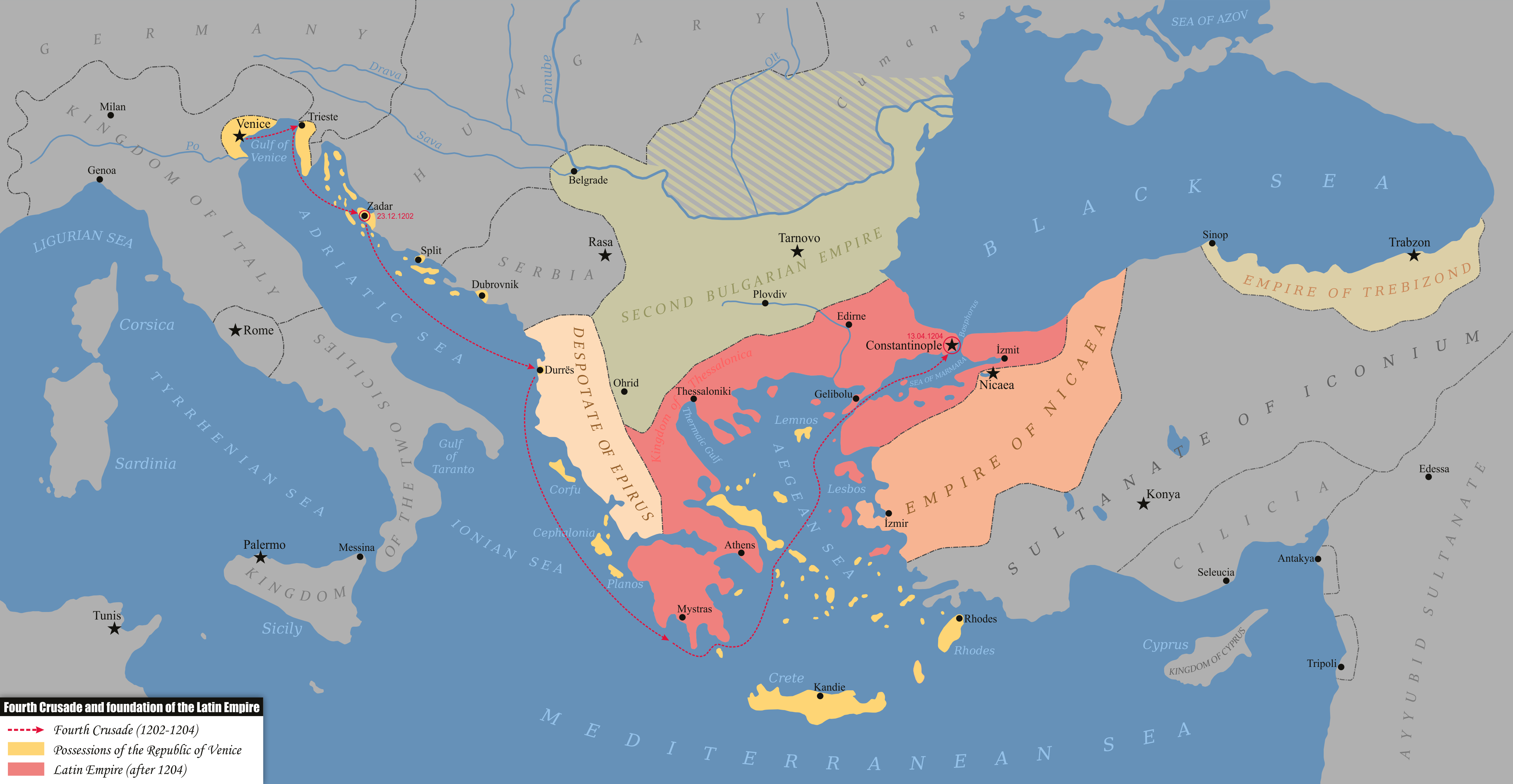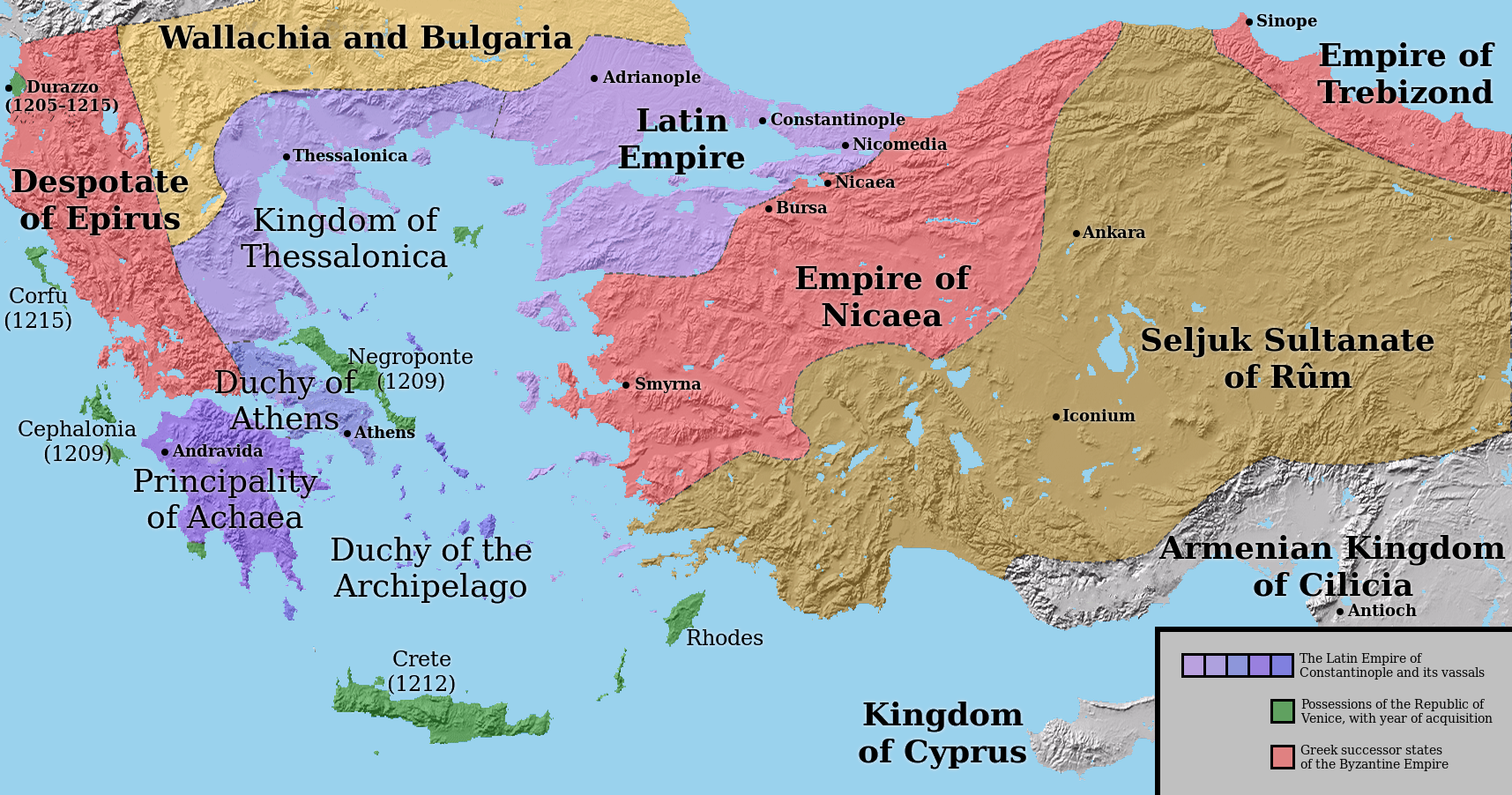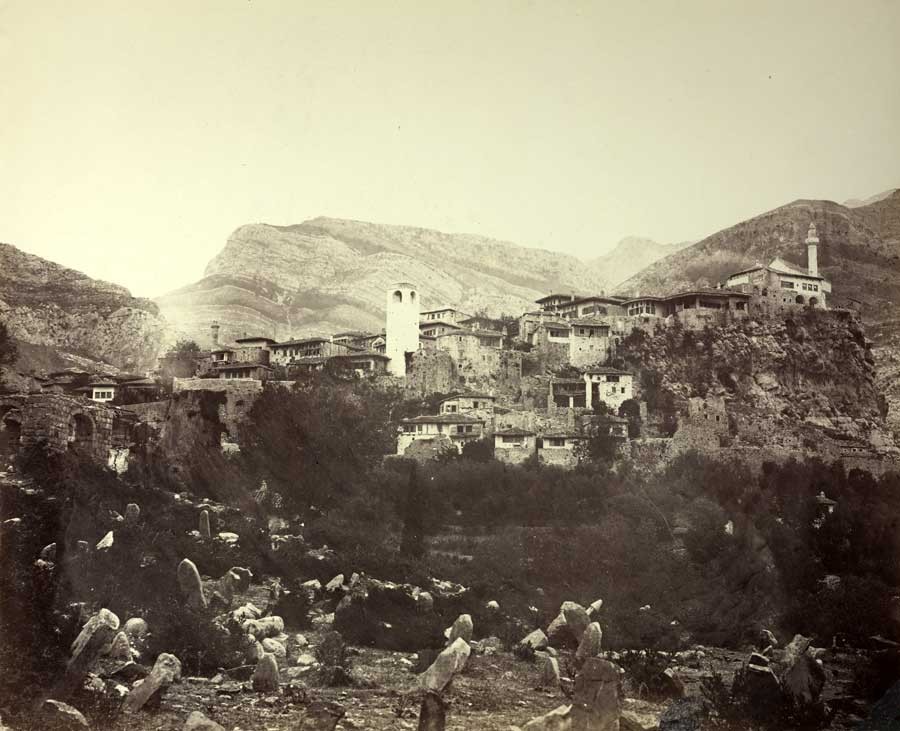|
Baili Of Constantinople
''Bailo'' or ''baylo'' (plural ''baili'' or ''bayli'') is a Venetian title that derives from the Latin term '' baiulus'', meaning "porter, bearer". In English, it may be translated bailiff, or otherwise rendered as bailey, baili, bailie, bailli or baillie. The office of a ''bailo'' is a ''bailaggio'' (sometimes anglicised "bailate"). The term was transliterated into Greek as μπαΐουλος (''baioulos''), but Nicephorus Gregoras translated it ἐπίτροπος (''epitropos'', steward) or ἔφορος (''ephoros'', overseer). In the Middle Ages, a ''bailo'' was a resident ambassador of the Republic of Venice. The most famous ''baili'' were those at Constantinople, who were, from 1268, the Venetian ambassadors to the Byzantine court and, after 1453, to the Ottoman government. There were also permanent ''baili'' at Negroponte, Durazzo and Corfu. ''Baili'' were also sent to represent Venetian interests at the courts of Cyprus, Acre (Jerusalem), Armenia and Trebizond. In t ... [...More Info...] [...Related Items...] OR: [Wikipedia] [Google] [Baidu] |
Venetian Language
Venetian, also known as wider Venetian or Venetan ( or ), is a Romance languages, Romance language spoken natively in the northeast of Italy,Ethnologue mostly in Veneto, where most of the five million inhabitants can understand it. It is sometimes spoken and often well understood outside Veneto: in Trentino, Friuli, the Julian March, Istria, and some towns of Slovenia, Dalmatia (Croatia) and Bay of Kotor (Montenegro) by a surviving autochthonous Venetian population, and in Argentina, Australia, Brazil, Canada, Mexico, the United States and the United Kingdom by Venetians in the diaspora. Although referred to as an "Italian dialect" (; ) even by some of its speakers, the label is primarily geographic. Venetian is a separate language from Italian, with many local varieties. Its precise place within the Romance language family remains somewhat controversial. Both Ethnologue and Glottolog group it into the ''Gallo-Italic'' branch (and thus, closer to French language, French and E ... [...More Info...] [...Related Items...] OR: [Wikipedia] [Google] [Baidu] |
Empire Of Trebizond
The Empire of Trebizond or the Trapezuntine Empire was one of the three successor rump states of the Byzantine Empire that existed during the 13th through to the 15th century. The empire consisted of the Pontus, or far northeastern corner of Anatolia, and portions of southern Crimea. The Trapezuntine Empire was formed in 1204 with the help of Queen Tamar of Georgia after the Georgian expedition in Chaldia and Paphlagonia, which was commanded by Alexios Komnenos a few weeks before the Sack of Constantinople. Alexios later declared himself emperor and established himself in Trebizond (now Trabzon in Turkey). Alexios and David Komnenos, grandsons and last male descendants of the deposed emperor Andronikos I Komnenos, pressed their claims as Roman emperors against Alexios V Doukas. While the rulers of Trebizond bore the title of emperor until the end of their state in 1461, their rivals, the Laskarids in Nikaia and the Palaiologoi in Constantinople contested their claim to t ... [...More Info...] [...Related Items...] OR: [Wikipedia] [Google] [Baidu] |
Council Of Ten
The Council of Ten (; ), or simply the Ten, was from 1310 to 1797 one of the major governing bodies of the Republic of Venice. Elections took place annually and the Council of Ten had the power to impose punishments upon Venetian nobility, patricians. The Council of Ten had a broad jurisdictional mandate over matters of National security, state security. The Council of Ten and the Full College constituted the inner circle of oligarchical patricians who effectively ruled the Republic of Venice. Origins The Council of Ten was created in 1310 by Doge Pietro Gradenigo.David Chambers & Brian Pullan with Jennifer Fletcher (eds.). ''Venice: A Documentary History, 1450-1630'' (2001, reprinted 2004). University of Toronto Press/Renaissance Society of America. p. 55. Originally created as a temporary body to investigate the Tiepolo conspiracy, plot of Bajamonte Tiepolo and Marco Querini, the powers of the Council were made formally permanent in 1455.Edward Muir (1981). ''Civic Ritual in Ren ... [...More Info...] [...Related Items...] OR: [Wikipedia] [Google] [Baidu] |
Chancery (medieval Office)
A chancery or chancellery () is a medieval writing office, responsible for the production of official documents.Coredon ''Dictionary of Medieval Terms and Phrases'' p. 66 The title of chancellor, for the head of the office, came to be held by important ministers in a number of states, and remains the title of the heads of government in modern Germany and Austria. Chancery hand is a term for various types of handwriting associated with chanceries. Etymology The word ''chancery'' is from French, from Latin, and ultimately refers to the lattice-work partition that divided a section of a church or court, from which also derives chancel, cancel "cross out with lines", and, more distantly, incarcerate "put behind bars" – see '' chancery'' for details. In England In England's medieval government, this office was one of the two main administrative offices, along with the Exchequer. It began as part of the royal household, but by the 13th-century was separate from the househo ... [...More Info...] [...Related Items...] OR: [Wikipedia] [Google] [Baidu] |
Frankish Greece
The Frankish Occupation (; anglicized as ), also known as the Latin Occupation () and, for the Venetian domains, Venetian Occupation (), was the period in Greek history after the Fourth Crusade (1204), when a number of primarily French and Italian states were established by the on the territory of the partitioned Byzantine Empire. The terms and derive from the name given by the Orthodox Greeks to the Western French and Italians who originated from territories that once belonged to the Frankish Empire, as this was the political entity that ruled much of the former Western Roman Empire after the collapse of Roman authority and power. The span of the period differs by region: the political situation proved highly volatile, as the Frankish states fragmented and changed hands, and the Greek successor states re-conquered many areas. With the exception of the Ionian Islands and some islands or forts which remained in Venetian hands until the turn of the 19th century, the ... [...More Info...] [...Related Items...] OR: [Wikipedia] [Google] [Baidu] |
Arabic Language
Arabic (, , or , ) is a Central Semitic languages, Central Semitic language of the Afroasiatic languages, Afroasiatic language family spoken primarily in the Arab world. The International Organization for Standardization (ISO) assigns language codes to 32 varieties of Arabic, including its standard form of Literary Arabic, known as Modern Standard Arabic, which is derived from Classical Arabic. This distinction exists primarily among Western linguists; Arabic speakers themselves generally do not distinguish between Modern Standard Arabic and Classical Arabic, but rather refer to both as ( "the eloquent Arabic") or simply ' (). Arabic is the List of languages by the number of countries in which they are recognized as an official language, third most widespread official language after English and French, one of six official languages of the United Nations, and the Sacred language, liturgical language of Islam. Arabic is widely taught in schools and universities around the wo ... [...More Info...] [...Related Items...] OR: [Wikipedia] [Google] [Baidu] |
Tenedos
Tenedos (, ''Tenedhos''; ), or Bozcaada in Turkish language, Turkish, is an island of Turkey in the northeastern part of the Aegean Sea. Administratively, the island constitutes the Bozcaada, Çanakkale, Bozcaada district of Çanakkale Province. With an area of , it is the third-largest Turkish island after Imbros (Gökçeada) and Marmara Island, Marmara. In 2022, the district had a population of 3,120 inhabitants. The main industries are tourism, wine production and fishing. The island has been famous for its grapes, wines and red poppies for centuries. It is a former bishopric and presently a Latin Catholic titular see. Tenedos is mentioned in both the ''Iliad'' and the ''Aeneid'', in the latter as the site where the Achaeans (Homer), Greeks hid their fleet near the end of the Trojan War in order to trick the Troy, Trojans into believing the war was over and into taking the Trojan Horse within their city walls. Despite its small size, the island was important throughout clas ... [...More Info...] [...Related Items...] OR: [Wikipedia] [Google] [Baidu] |
Patras
Patras (; ; Katharevousa and ; ) is Greece's List of cities in Greece, third-largest city and the regional capital and largest city of Western Greece, in the northern Peloponnese, west of Athens. The city is built at the foot of Mount Panachaikon, overlooking the Gulf of Patras. As of the 2021 census, the municipality of Patras has a population of 215,922, while the urban population is 173,600. The core settlement has a history spanning four millennia. In the Roman period, it had become a cosmopolitan center of the eastern Mediterranean whilst, according to the Christian tradition, it was also the place of Saint Andrew's Christian martyr, martyrdom. Dubbed as Greece's "Gate to the West", Patras is a commercial hub, while its busy port is a nodal point for trade and communication with Italy and the rest of Western Europe. The city has three public universities, hosting a large student population and rendering Patras an important scientific centre with a field of excellence ... [...More Info...] [...Related Items...] OR: [Wikipedia] [Google] [Baidu] |
Nauplia
Nafplio or Nauplio () is a coastal city located in the Peloponnese in Greece. It is the capital of the regional unit of Argolis and an important tourist destination. Founded in antiquity, the city became an important seaport in the Middle Ages during the Frankokratia as part of the lordship of Argos and Nauplia, held initially by the de la Roche following the Fourth Crusade before coming under the Republic of Venice and, lastly, the Ottoman Empire. The city was the second capital of the First Hellenic Republic and of the Kingdom of Greece, from 1827 until 1834. Name The name of the town changed several times over the centuries. The modern Greek name of the town is ''Nafplio'' (Ναύπλιο). In modern English, the most frequently used forms are ''Nauplia'' and ''Navplion''. The oldest reference to Nafplio appears to be in the so-called "Aegean List" from the Mortuary Temple of Amenhotep III, dating to 14th century BCE, where it is recorded as (). In Classical Antiquity, ... [...More Info...] [...Related Items...] OR: [Wikipedia] [Google] [Baidu] |
Methoni, Messenia
Methoni (), formerly Methone or Modon (), is a village and a former municipality in Messenia, Peloponnese, Greece. Since the 2011 local government reform it is part of the municipality of Pylos-Nestor, of which it is a municipal unit. The municipal unit has an area of 97.202 km2. Its name may be derived from Mothona, a mythical rock. It is located 11 km south of Pylos and 11 km west of Foinikounta. The municipal unit of Methoni includes the nearby villages of Grizokampos, Foinikounta, Foiniki, Lachanada, Varakes, Kainourgio Chorio, Kamaria, Evangelismos, and the Oinnoussai Islands. The islands are Sapientza, Schiza, and Santa Marina; they form a natural protection for Methoni harbour. Its economy is dominated by tourism, attracted by its beaches (including Tapia, Kokkinia and Kritika) and its historical castle. Subdivisions The municipal unit of Methoni is subdivided into the following communities (constituent villages in brackets): *Methoni (Methoni, Kokkinia, ... [...More Info...] [...Related Items...] OR: [Wikipedia] [Google] [Baidu] |
Koroni
Koroni or Corone () is a town and a former municipality in Messenia, Peloponnese, Greece. Since the 2011 local government reform it is part of the municipality Pylos-Nestor, of which it is a municipal unit. Known as ''Corone'' by the Venetians and Ottomans, the town of Koroni (pop. 1,193 in 2021) sits on the southwest peninsula of the Peloponnese on the Gulf of Messinia in southern Greece, by road southwest of Kalamata. The town is nestled on a hill below a Venetian castle and reaches to the edge of the gulf. The town was the seat of the former municipality of Koróni, which has a land area of and a population of 3,600 (2021 census). The municipal unit consists of the communities Akritochori, Charakopio, Chrysokellaria, Falanthi, Kaplani, Kompoi, Koroni, Vasilitsi, Vounaria and Iamia. It also includes the uninhabited island of Venétiko. History The town was founded in ancient times. The 2nd century Greek geographer Pausanias in his book ''Messeniaka'' reports the ... [...More Info...] [...Related Items...] OR: [Wikipedia] [Google] [Baidu] |
Antivari
Bar ( Montenegrin: Bar, Бар, , ) is a town and seaport in Coastal region of Montenegro. It is the capital of the Bar Municipality and a center for tourism. According to the 2023 census, the city proper had 15,868 inhabitants, while the total population of Bar Municipality was 46,171. Name Bar is supposed to be a shortened Slavic variant of ''Antivari''. The name is thought to be derived from the Latin ''Antibarum'' or ''Antibari'', which later in Greek was transformed into ''Antivárion / Antivari'' due to its pronunciation. "Antibari", meaning "opposite Bari", is a name taken because of it is location across the Adriatic Sea from Bari in Italy. Variations are in Italian, ''Antivari / Antibari''; in Albanian, ''Tivari'' or ''Tivar''; in Turkish, ''Bar''; in Greek, Θηβάριον, ''Thivárion'', Αντιβάριον, ''Antivárion''; in Latin, ''Antibarium''. History Ancient times Archaeological findings of substantial extent prove the presence of life in this location ... [...More Info...] [...Related Items...] OR: [Wikipedia] [Google] [Baidu] |






